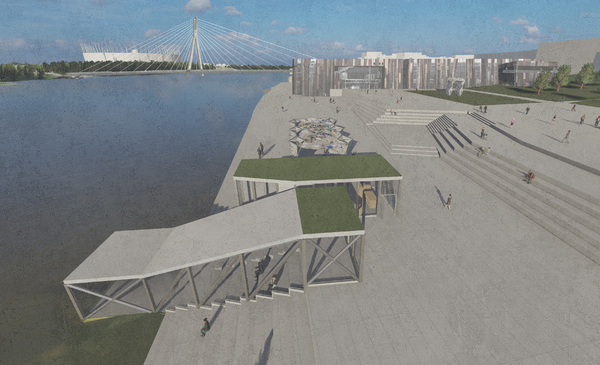My research question was how can architects, artists and activists bring a real change to the world facing climate crisis. I started by using various activism and design activism methods to affect and educate people on a vast range of environmental issues, both the UK and Poland. Then, I selected a few most affective performances and used their topics and methodology to establish the narrative for my final architectural project – Polish Museum of Environmental Crisis.
The Plastic Pollution Branch consists of three parts. The first, Trash Truck, drives to a few selected locations in Warsaw and collects plastic from the people living in the capital. Then, the trash is released onto the Net Pavilion, where visitors can experience plastic almost falling on their heads. For the pavilion to work, I had to design a hydraulic system responsible for rising and falling of the net. The last component is a 3D printing workshop where the plastic is turned into filament and then printed into items that the visitors can buy using coupons, they got from donating the trash.
For the Air Pollution Branch, I designed White Cloth Pavilion. It shows people polish biggest environmental problem caused, in majority, by coal burning. The white material of the pavilion is meant to gather the pollution so that people can literally see how dirty the air they breathe really is.
For the Water Rising Branch, I created the Water Chamber from within which people can observe the falling and rising level of the Vistula River. It was designed to withstand the current of flooding river.
The narratives of the pavilions are connected – plastic pollution contributes to the greenhouse gas emission, especially during its break-down; air pollution, in turn, has the same cause as the rising temperature, which links both to the rising water levels.


